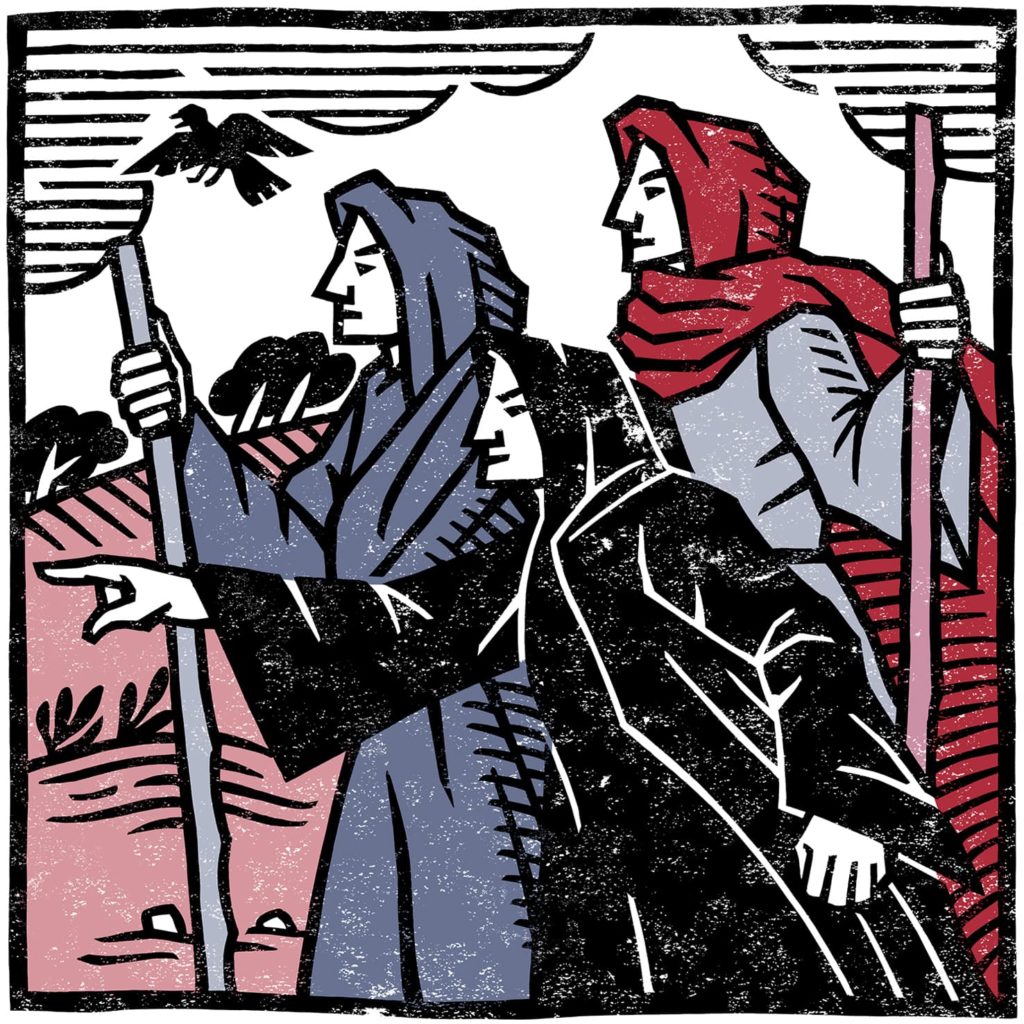The play flatters King James many times, so is most likely to date no earlier than 1603, when he became King of England. Indirect references to the Gunpowder Plot of November 1605 and subsequent trials suggest that it was written (or at least revised) in 1606.
The play wasn’t printed before appearing in the First Folio. It was probably typeset from the acting company’s prompt-book, or a transcript of it. The play is short, and could be based on an abridged adaptation of a longer play that is now lost.

‘Light thickens,
And the crow makes flight to th’ rooky wood;
Good things of day begin to droop and dowse,
While night’s black agents to their preys do rouse.’
Macbeth, III ii
Brief synopsis of the play
On a remote heath, the comrades Macbeth and Banquo encounter three sisters who predict that Macbeth will become both Thane of Cawdor and King of Scotland. When King Duncan makes him the Thane of Cawdor, Macbeth and his wife are driven to murder – starting with Duncan, to gain the throne, and Banquo, to secure their positions. Their brutal, doomed ambition is swayed by supernatural forces, in an enthralling psychological play that confronts the nature of evil.



